September 2020 Circeo Gaeta
On Sunday and Monday the forecast is for rain. In the end we manage to walk along the beach both morning and afternoon both days with varying degrees of sunny spells and showers.
On Tuesday the sun comes out again and our destination is Gaeta. A strained muscle in my back is still bothering me so Andrea drives but nevertheless it distracts me during the journey, I can't get comfortable. After Sperlonga the drive is by the sea and really quite panoramic. We find free parking in the area in front of a Conad supermarket where the open air market is held on Wednesdays. There are some blue lines which indicate paid parking and some white. From here it's a short walk through an area of shops to the sea front.

The sea front comes to an end in a military area so we continue back and upwards through the historical centre, stopping to look at the fine bell tower of the cathedral, built of brick with pieces of great marble carvings, on the stairs, including 2 lion heads in white marble. As with the pillars inside the cathedral many pieces were taken from ancient temples and reused to build the cathedral. Byzantine in style, the bell-tower is 57 meters high.
It consists of three floors with mullioned windows topped by an octagonal dome structure with small Romanesque arches and majolica decorations. Inside, despite the first Baroque impact there are many interesting details. The most important is the candelabra stand, carved in circular bands with scenes of St. Erasmus and of Christ. The floor includes lovely Cosmati mosaics. The Baroque crypt is also very grand.
The marble steps on 2 sides lead down to a landing that is laid in Bargello pattern in tricolori of white, grey and black to create a 3d effect. We use a euro to turn on the lights and so also study the attractive marble inlay.
The morning is passing so we continue up to San Francesco, unfortunately closed.
But from more or less there we follow first a road which then becomes a country lane up towards Monte Orlando park.
There are some spectacular don't look down views of the cliffs and sea below. In about half an hour, but at a strolling pace, I'm still cautious about my back, we arrive up to the Mausoleum of Lucius Munatius Plancus. Distractedly because it's quite hot and nearly lunchtime, I give a cursory glance to the building, which is closed, but fortunately read the information panel hence discovering that the mausoleum is the tomb of a Roman man of huge military virtue and political ability, who lived between 90 and the end of the 1st century BC and was probably finished in about 20BC. A closer and more respectful look ensues.
Nevertheless it is still lunchtime and I really would like a bench with a view, usually in short supply or impossible to find, but continuing a little on a path I thank whoever saw fit to position a bench with a view just there. What a perfect picnic place.
The very pleasant walk in the woods eventually takes us to the Sanctuary of the Santissima Trinità or Holy Trinity, founded in the 11th century it was annexed to a Benedictine monastery. The church itself is open but the other places we want to see will open at three so we wander up and down a while but decline to sit when we see a flattish snake, possibly an adder, squeezing itself out between the blocks of stone below a stone seat. In the end we don't have to wait quite until 3 o'clock.
To the right of the church, there is a corridor which is decorated with majolica tiles depicting “The Stations of the Cross“ which takes us down to the Split Mountain above the sea. A large rock broke loose from the top of the two sides of the rock that gave the name to the "split mountain" and got stuck further down between the walls in 1434. A small chapel devoted to the Crucifix was built on top of it. On the way down on the right just before the chapel there is a handprint on the rock which was formed, according to the legend, when an incredulous Turkish sailor put his hand on the wall, which miraculously became liquid under the pressure. Just after, the chapel is on the right but the really spectacular part is the view from the chapel roof of the split mountain and green blue sea below.
Afterwards we also go down the steps to see the Grotto but access is only to a balcony above it, not right to the bottom. After, a short downhill walk takes us back to the centre of Gaeta where we walk down the very pleasant seafront and then sit a while enjoying the mellow autumn sun after all the rain, before heading back to base.

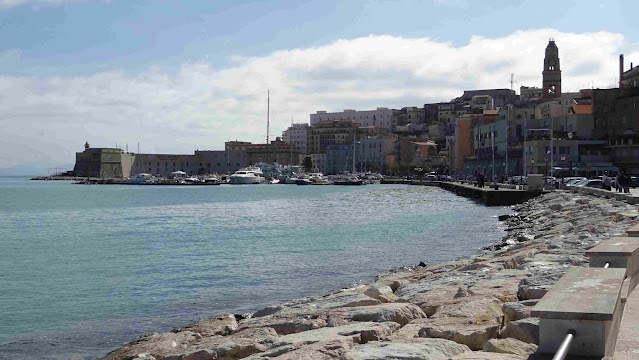

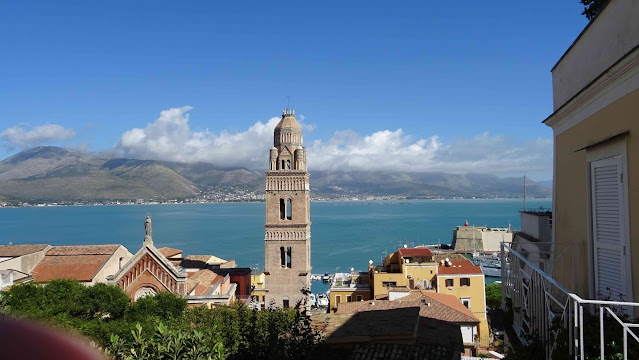
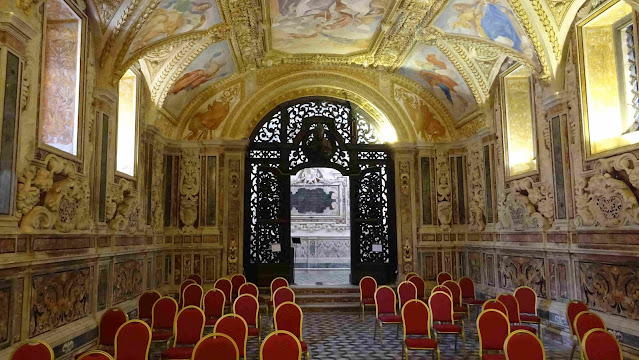

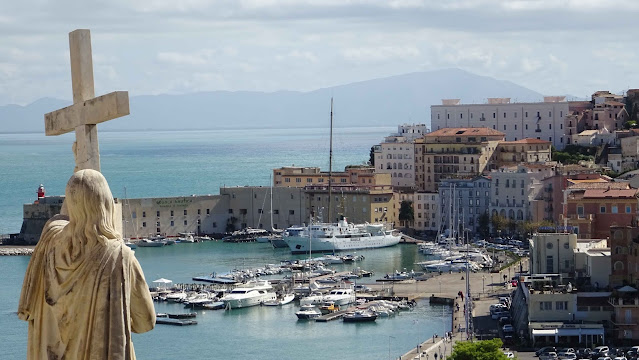
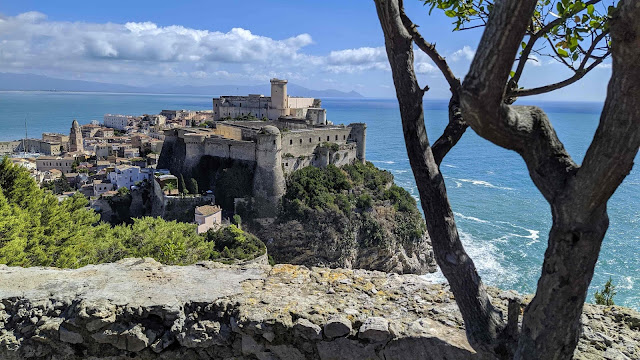
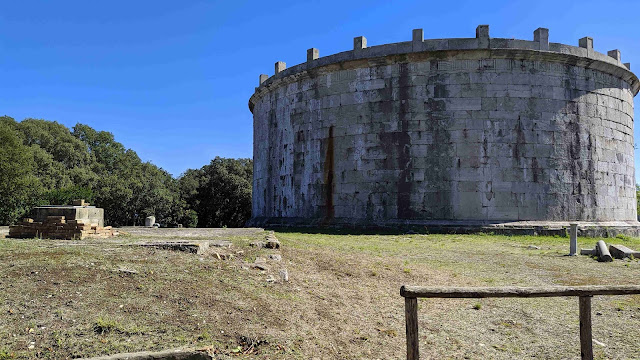
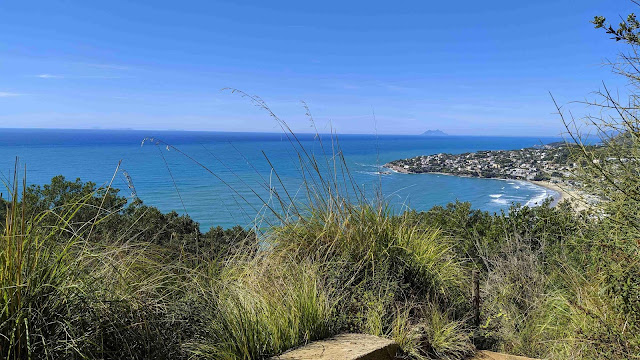
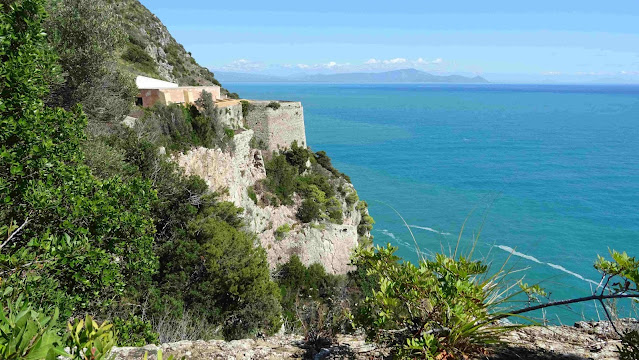



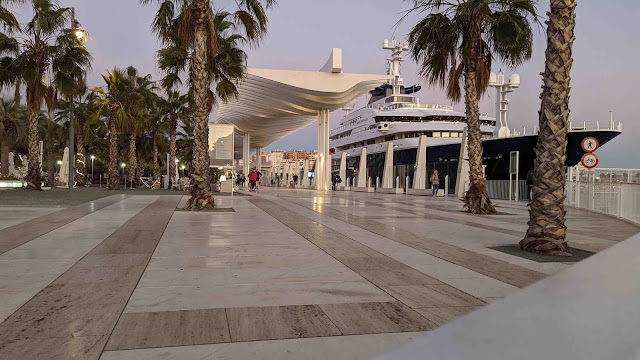



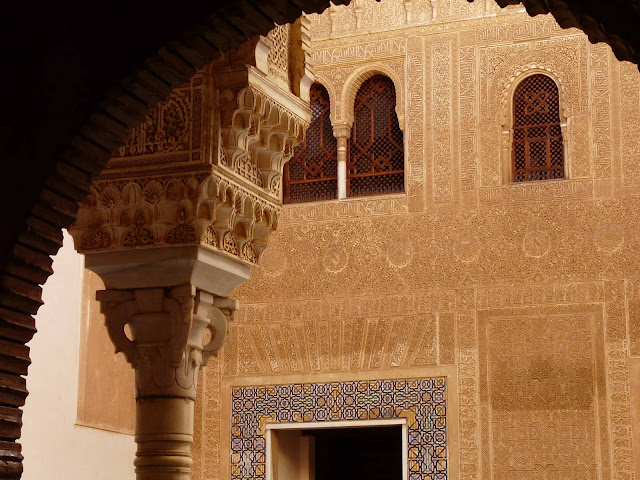
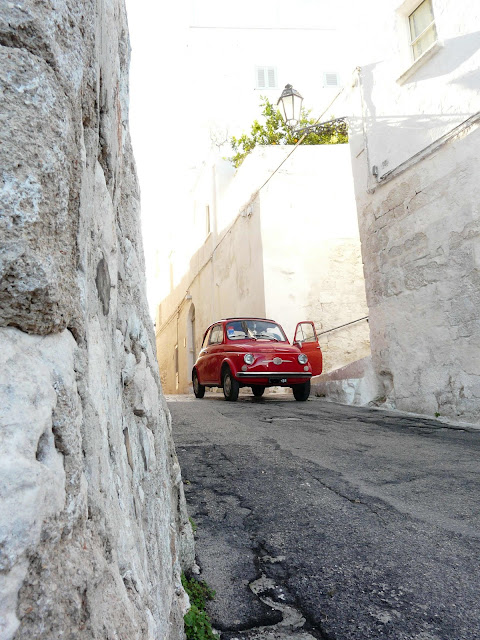
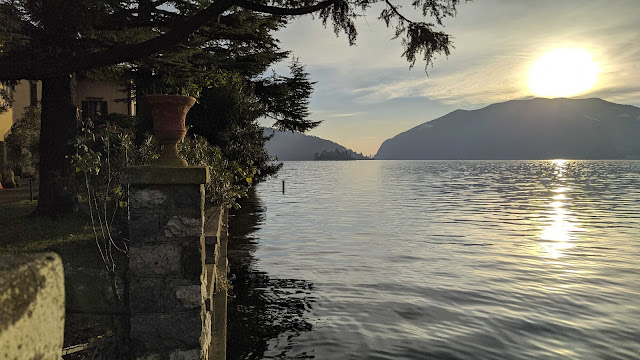

Comments
Post a Comment